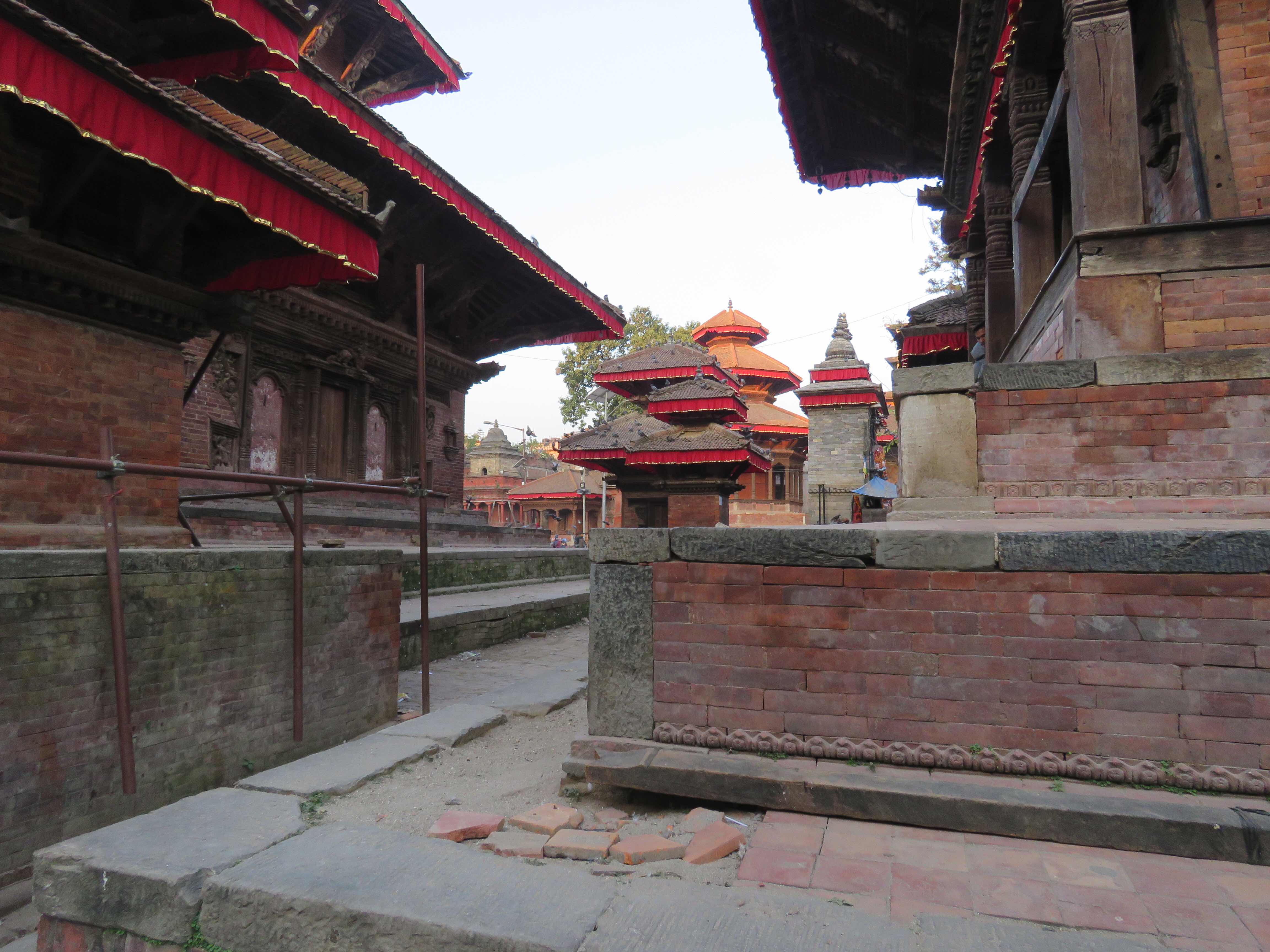We then visited Patan which is known as the city of fine arts and along with Kathmandu and Bhaktapur make up the three cities of the Kathmandu valley though they all run together now and are only separated by a bridge. Patan is a center for artists and craftsmen and is known for its fine metalwork. We visited the palace square where part of the palace has been turned into a wonderful museum which offered an excellent introduction to the Buddhist and Hindu art and religion of Nepal. While there we saw a wonderful Buddha of compassion which we both loved and luckily our guide Yam helped us find one that was made in Patan that will forever remind us of our wonderful journey to this unique part of the world.
Our last stop was at Swayambhunath which is a 2500 year old shrine located on the top of a hill in Kathmandu. First of all the panoramic views of the city were spectacular and made one realize just how large the city is. This shrine is unique as it a mix of both Buddhist and Hindu worship and is a place they both worship in harmony further demonstrating the acceptance of religious freedom in Nepal. This shrine is also known as the monkey temple as hundreds of monkeys live on the hill and can be seen playing amongst the shrines. A Buddhist stupa is in the center of the shrine but there are also prominent Hindu shrines as well.
Our last evening in Kathmandu we had a lovely cocktail party followed by a farewell dinner. Two weeks have flown by as we say goodbye to new found friends and countries. It has been an amazing adventure and I still am in awe that we have actually stood at Everest base camp. We have experienced cultures like we have never seen and are richer for it. How blessed we are to learn through travel. Looking forward to the next adventure!

Old monk sitting counting donations

The home of the Living Goddess

All means of transportation

Fruit seller in the early morning market. All the produce looked wonderful

Don’t know what was in the sacks but he had a full load

Sharing breakfast while getting ready for the day

This picture is for Tiffany as I know how much she loves birds. The people sitting on the ground are selling grain to feed to the birds.

Part of the temple complex

Mostly undamaged this temple stood tall amid some in ruins

People set up where ever they could

Marigolds were the flower of choice with an abundance of different vegetables

Even fresh fish was up for sale

Some set up cooking stalls and offered hot food. The smells were wonderful

By 10am all of this will be gone and the permanent merchants will be open for business and then it will start again early the next morning

Pagoda in the center of Patan

Temple complex in Patan

Lady waiting for some sewing business

Cooking on the side of the street

Golden door entrance to the palace

Buddha of compassion

The local laundromat. This one is self service

Restoration work going on in Patan

View of Kathmandu from Swayambhunath

One of the Hindu shrines

This monkey was regarding us rather seriously

Main stupa in the background surrounded by dozens of smaller ones

A couple of tourists posing for the camera

Our last look at Everest and the Himalayas as we flew out of Kathmandu

































